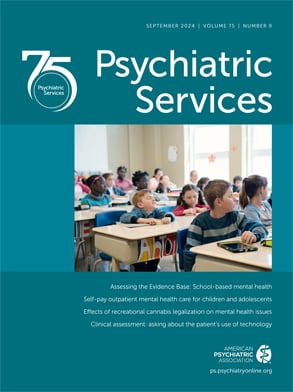Abstract
The model described above indicates that local mental health professionals can join together to design a system that can control costs and improve accessibility, continuity, and, ultimately, quality of care. Although the system is more expensive than one that severely limits care and restricts accessibility to psychiatrists, it appears to be highly valued by patients who have used its services, by primary care physicians who have made referrals, and by the mental health professionals who have come together in a collegial, clinically driven approach to sensible management of patients while controlling costs.
Even though the situation that led to the development of the program was unique, we believe that the professional affiliation group model can be adapted to other communities and other delivery systems. A network of professional affiliation groups can calculate and contract for per capita reimbursement with HMOs or indemnity insurers. A small interdisciplinary group needs to take the lead in organizing such a program.
A larger interdisciplinary group of clinicians needs to be involved in the process. A larger network may be more difficult to manage or control but allows for broader distribution of special interests and expertise as well as better geographic coverage. It also spreads the on-call responsibility among a larger group and assures that no individual clinician is too heavily dependent on this particular plan for his or her livelihood.
The professional affiliation group model provides some financial incentives for clinicians to manage patients efficiently and effectively within an agreed-on target figure. Although the system operates with fee-for-service payment, the fee-withholding mechanism encourages individual providers to help the system stay within its budget. Data on length and cost of treatment are distributed and discussed at individual group meetings, and clinician performance is compared within and between groups to understand why one group may have a much higher average number of visits than another.
Severe limitations have not been imposed on outpatient visits, which average seven per year per user, because the current target expenditure figure is adequate to support current utilization rates, particularly with the savings that have been achieved in inpatient utilization. As the pressure to reduce costs continues to intensify, additional mechanisms to control outpatient utilization may be necessary. All new patients enrolled in the program receive an information sheet explaining that although their benefit covers 20 visits, most patients are treated in seven visits or less. This explanation may help them focus their treatment and change the expectation that they are automatically entitled to 20 visits.
A recent article by Quirk and associates (11) suggests that HMO mental health services need to be evaluated from the perspectives of the patient or subscriber, the employer, the primary care physician, and the mental health clinician. We believe that from all four perspectives the professional affiliation group model is superior to unmanaged indemnity plans, managed indemnity plans, staff model HMOs, and managed mental health carve-out companies. For example, a study of patient satisfaction at a large staff model HMO found that only a third of patients were satisfied with their care, a third were unsure, and a third were dissatisfied (12).
The program's future activities include careful analysis of utilization data and the implementation of standardized outcome measurements to determine the effectiveness of the services provided. Although the current debate about health care reform has created much uncertainty and anxiety among providers, no model has emerged that is clearly superior for providing cost-effective, high-quality care (13). There may still be opportunities for local control and involvement in the organization, financing, and delivery of health and mental health services.

